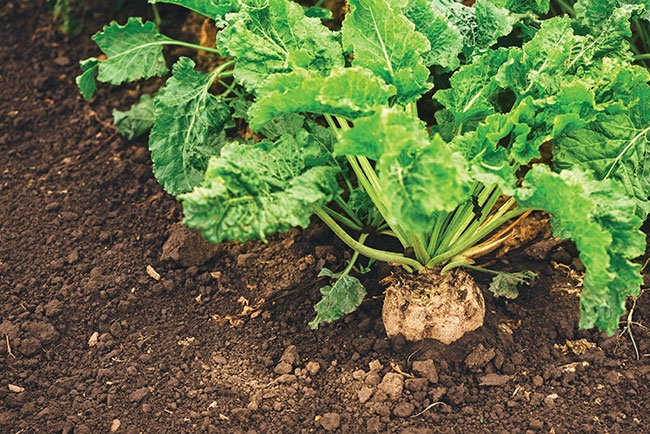
Features
Organic Perspective
Organic production
Production
Balance and biodiversity: It all starts with the soil
Without the soil life, organic waste does not break down.
May 13, 2019 By Katrina Simmons
 Photo: Adobe Stock
Photo: Adobe StockBalance and biodiversity are key to the health of an organic farm (and farmer!) Crops and livestock play their own vital role, while the fundamental cycle of life begins and ends with the soil.
Trillions of micro-organisms, protozoa, nematodes and fungi (and don’t forget the worms) inhabit every cubic metre of soil. Each species fills a niche, eating, eliminating, reproducing and dying, all without the fanfare and recognition they deserve. They munch their way through their short life, breaking down rock and organic matter, making nutrients available to the plants with which they cohabitate. Their waste creates the glue that holds healthy soil together, and forms a loose and rich humus that absorbs and retains moisture.
Mycorrizhal fungi attach their long strands to roots, channeling nutrients from surrounding soil and strengthening a plant’s resistance to disease and drought. In return, the plants release sugars that feed the fungi. Their leaves shade and cool the soil, creating a suitable environment for microbial and other inhabitants. Without the soil life, organic waste does not break down. Soil loses its ability to hold water, and no longer provides the full range of micro- and macro-nutrients to the crops, or, in turn, to us.
Life in a healthy soil is diverse, adaptable and resilient. This is not the only farm ecosystem in which micro-organisms thrive though. People host a myriad of life forms on, and in their bodies. Current studies suggest a direct link between soil health and gut health. Robust human health depends on balanced and diverse colonies of gut bacteria that are transferred from mother to child pre-and post-birth, and from the soil. These microbes digest food, break down environmental pollutants and pharmaceutics, and guard against inflammatory and autoimmune diseases. By encouraging biodiversity in a well-balanced soil, organic farmers are also helping to restore healthy populations of gut microflora in the people that they feed.
The balance of life above ground is far easier to observe. Ladybugs eat aphids; caterpillars host parasitic wasps; birds prey on moths and beetles; raptors keep rodents and small birds in check. Predators, though, need food and the right habitat to attract them. Without trees there will be no birds. And fields cleared of all native plants and crop residue provide little habitat for ladybugs to overwinter.
Shelter belts, hedgerows and wildflower strips in and around orchards provide habitat for pollinators and beneficial insects. Parasitic wasps and syphid flies help keep foliar pests in check if sweet cicely is planted nearby. Queen Anne’s lace, considered by some to be an aggressive weed, is a good food source for the pollinators, so vital for both farm and garden.
Crop rotation is used to break pest cycles and maintain balance in the nutrients that are drawn from the soil. The organic rotation also includes legumes like alfalfa and clover as plough-downs, adding nitrogen and biomass to keep the soil life well fed. If livestock reside on the farm, they play an essential role in the balancing act as well. Their diet includes forage and food waste from the farm. In return they provide manure that, when composted, is returned to the fields to feed the soil life once again.
There is room on the organic farm for a wide variety of species, each with its own role to play, as predator or prey, building up or breaking down, consuming or being consumed. Recognizing the value of every player is a patiently acquired skill: a balancing act that places biodiversity and soil health in the middle of the frame.
Print this page